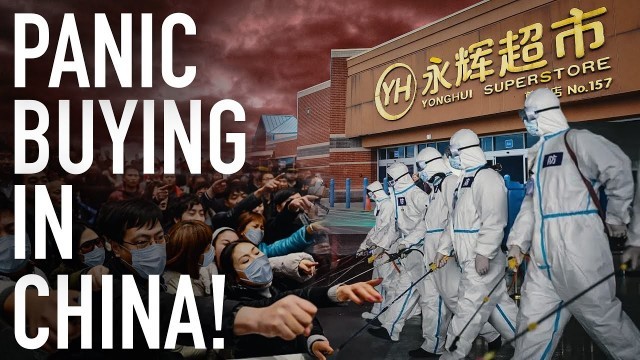

'Chaotic scenes of desperate people panic buying food and energy supplies are rapidly spreading all around the world – and the U.S. could be next. In several countries, supermarkets and local stores are quickly running out of everyday necessities as residents rush to stock up on crucial goods before shortages worsen. Simultaneously, the global energy crisis is driving the demand for alternative energy sources to stratospheric heights on a consumer and industrial level. Industry insiders exposed that even major manufacturers in global markets are panic buying raw materials and commodities in anticipation of further disruptions. Purchasing limits, rationing, and empty shelves are ahead, and the commotion we’ve seen so far is just the tip of the iceberg. Even as the rest of the world emerged from the global pandemic, Chinese citizens are still facing strict stay-at-home mandates. This time, millions of residents in Chengdu city dipped into a snap lockdown which triggered widespread desperation among the population. The new measures sparked a panic buying frenzy of essential supplies that stripped store shelves bare in record time. The residents were given less than six hours to stock up on critical supplies, which resulted in the mass hoarding of vegetables and fruits, seafood, and red meat by locals who were in an all-scrambling state. Some drivers were captured filling their cars to the brim with slabs of red meat and were even captured fastening dead chickens to the roofs of their vehicles. At this stage, the restrictions have no end date and they’re likely to cause a major economic fallout, particularly for the manufacturing and technology sectors. The new curbs prompted widespread alarm in global markets, with major manufacturers hurrying to ensure supplies of raw materials and commodities to keep operations running. During the Global Financial Derivatives meeting on Friday, the 2022 Economics Bulletin noted that tight supplies for critical materials “have driven global manufacturers and local investors to front-load their inventory requirements with panic buying as industrial activities slumped with weak supply chains and unavailability of raw materials.” Meanwhile, the race to hoard energy supplies amid skyrocketing natural gas prices is leaving Europeans scrambling for alternative energy sources. In Germany, where households are facing a 720% rise in their gas bills, people are resorting to stockpiling firewood. However, suppliers of the raw material are unable to keep up with the growing demand, leading to a scarcity of firewood. To prevent the panic-buying wave from escalating any further, some sellers have been rationing supplies and limiting purchases to three boxes of wood at a time. In the U.S., even the corporate-controlled media is admitting that “social media is getting swamped with pictures of empty grocery shelves”. The federal government promised to solve our supply chain problems, but in the past two years, they just kept getting worse. In some states, inventories have never recovered from the early shortages caused by the health crisis, which makes common delivery delays result in extensive product shortages. Now more than ever, it’s important to make common sense preparations for the time when economic chaos starts rocking our nation. Sadly, most of our fellow citizens are completely and utterly unprepared for what is happening. But if you think that we’ve already seen the worst of these crises, just wait, because the truth is that what we have experienced so far is just the start.'
Tags: hoarding , food production , food shortages , PANIC BUYING , empty shelves , food stockpiling , supply chain disruption , supply chain crisis , energy crisis , grocery shortages , China panic buying , panic buying frenzy , panic buying in america , energy supply shortage , energy prices , raw material shortages , europe energy crunch , global power shortage , chinese lockdowns , chengdu lockdown , natural gas shortages , firewood shortages , retail panic buying
See also:

















comments